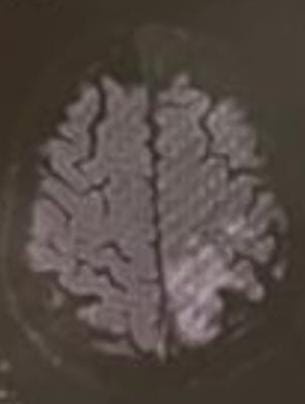FINAL PRACTICAL EXAM LONG CASE- 70 YEAR OLD MALE WITH RECURRENT CVA
General Medicine final practical exam- Long case
Reg no: 1701006068
I've been given this case to solve in an attempt to understand the topic of "patient clinical data analysis" to develop my competency in reading and comprehending clinical data including history, clinical findings, investigations, and come up with a diagnosis and treatment plan.
Following is the view of my case :
CASE PRESENTATION
A 70-year-old male has presented to the hospital on 06 June 2022 with the chief complaints of
- slurring of speech
- difficulty in walking
- weakness of right upper and lower limbs
HISTORY OF PRESENT ILLNESS:
The patient was leading a peaceful life with his wife. He would wake up every day at about 6am, freshen up, have breakfast and do his daily chores like grazing the cattle till the afternoon. He would then have lunch and take a nap till evening. He then hung out with the neighbours, had dinner and rested for the day. This was his routine.
1st episode: Patient had been asymptomatic until 3 years ago when he suddenly acquired weakness in his right upper and lower limbs, with no slurring of speech. After being treated, he was able to recover.
2nd episode: He suffered a second episode of abrupt onset weakening of the right upper and lower limbs a year ago, which was accompanied by drooping of the mouth and saliva dribbling. He was treated for it again and fully healed.
3rd episode: He developed weakness of the left upper and lower limbs 9 days ago. He first was not able to walk then eat and then developed speech abnormality. He then went to an RMP and it was found that his blood pressure was high and advised the patient to go to the hospital. These were sudden in onset and progressed gradually.
- not a known case of diabetes, asthma, epilepsy, or TB.
- diagnosed with hypertension 10 months ago and has been using atenolol 25mg since.
- married
- normal appetite
- takes vegetarian diet predominantly
- bowel movements: regular
- micturition is normal
- no known allergies
- addictions: alcohol abstinence for 5 years.
Done after obtaining consent, in a well-lit room, in the presence of an attendant, with adequate exposure. The patient is conscious, incoherent, cooperative, well-nourished, and well-oriented to time, but not oriented to place and person.
- No pallor icterus, Cyanosis, Koilonychia, Generalised Lymphadenopathy, Pedal oedema and clubbing
- Slight muscle wasting in the right upper arm is observed
VITALS
- Temperature - afebrile
- Pulse rate- 70 bpm
- BP- 140/80 mm Hg
- Respiratory rate- 16/min
2. Respiratory system:
- Bilateral air entry present
- Normal vesicular breath sounds heard
4. CNS:
CNS EXAMINATION YOUTUBE VIDEO LINK- https://youtu.be/Kbg_z1mJq6w
Dominance - Right-handed
4a) Higher mental functions
- conscious and cooperative but incoherent
- oriented to time, but not oriented to place and person.
- memory- not able to recognize family members
- Speech - only comprehension, no fluency, no repetition
- I- Olfactory nerve- sense of smell present
- II- Optic nerve- direct and indirect light reflex present
- III- Oculomotor nerve, IV- Trochlear and VI- Abducens- no diplopia, nystagmus or ptosis
- V- Trigeminal nerve- Masseter, temporalis and pterygoid muscles are normal. Corneal reflex is present.
- VII- Facial nerve- face is symmetrical, unable to do forehead wrinkling, left nasolabial fold prominent than right.
- VIII- Vestibulocochlear nerve- no hearing loss
- IX- Glossopharyngeal nerve. X- Vagus- uvula not visualised
- XI- Accessory nerve- sternocleidomastoid contraction present
- XII- Hypoglossal nerve- Movements of tongue are normal, no fasciculations, no deviation of tongue
- crude touch present present
- fine touch absent present
- pain absent present
- vibration absent present
- temperature absent present
- stereognosis- absent present
- 2 pt discrimination- absent present
- graphaesthesia- absent present
CBP
- Hemoglobin- 12.6 gm/dl (N)
- PCV- 35.2 % (N)
- TLC- 8600/ cumm (N)
- RBC- 4.33 million/cumm (N)
- Platelets- 2.58 lakhs/ml (N)









Comments
Post a Comment